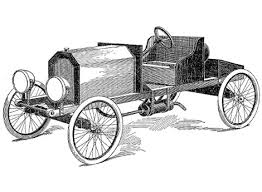DỊCH HOÀN THIỆN ĐỀ THI IELTS READING VÀ GIẢI THÍCH ĐÁP ÁN:
Pottery production in ancient Akrotiri
Excavations at the site of prehistoric Akrotiri, on the coast of the Aegean Sea, have revealed much about the technical aspects of pottery manufacture, indisputably one of the basic industries of this Greek city. However, considerably less is known about the socio-economic context and the way production was organised. ĐOẠN 1
Các cuộc khai quật tại địa điểm Akrotiri thời tiền sử, trên bờ biển Aegean đã tiết lộ nhiều về các khía cạnh kỹ thuật sản xuất gốm, hiển nhiên một trong những ngành công nghiệp cơ bản của thành phố Hy Lạp này. Tuy nhiên, bối cảnh kinh tế xã hội và cách sản xuất tổ chức được biết đến rất ít.
The bulk of pottery found at Akrotiri is locally made, and dates from the late fifteenth century BC. It clearly fulfilled a vast range of the settlement’s requirements: more than fifty different types of pots can be distinguished. The pottery found includes a wide variety of functional types like storage jars, smaller containers, pouring vessels, cooking pots, drinking vessels and so on, which all relate to specific activities and which would have been made and distributed with those activities in mind. Given the large number of shapes produced and the relatively high degree of standardisation, it has generally been assumed that most, if not all, of Akrotiri pottery was produced by specialised craftsmen in a nondomestic context. Unfortunately, neither the potters’ workshops nor kilns have been found within the excavated area. The reason may be that the ceramic workshops were located on the periphery of the site, which has not yet been excavated. In any event, the ubiquity of the pottery, and the consistent repetition of the same types in different sizes, suggests production on an industrial scale. ĐOẠN 2
Số lượng lớn đồ gốm được tìm thấy ở Akrotiri được sản xuất tại địa phương và có niên đại từ cuối thế kỷ 15 trước công nguyên. Rõ ràng nó đã đáp ứng một loạt các nhu cầu về trao đổi: có thể phân biệt hơn 50 loại bình khác nhau. Đồ gốm được tìm thấy bao gồm nhiều loại có chức năng khác nhau như: lọ chứa, các hộp đựng nhỏ, bình rót, nồi nấu, bình uống nước vâng vâng, tất cả chúng liên quan đến những hoạt động cụ thể và được lưu ý sản xuất, phân phối cùng với những hoạt động đó. Với số lượng lớn hình dáng được sản xuất và có mức độ tiêu chuẩn hóa tương đối cao, người ta nhận định rằng hầu như nếu không phải là tất cả gốm ở Akrotiri được sản xuất bởi những thợ thủ công chuyên môn trong một bối cảnh không phải là làm vật dụng gia đình. Thật không may, cả xưởng và lò nung của thợ gốm đều không được tìm thấy trong khu vực được khai quật. Lý do có lẽ là do các xưởng gốm nằm bên ngoài nơi mà chưa được khai quật. Trong bất kỳ trường hợp nào, sự phổ biến của gốm, và sự lặp lại nhất quán các kích thước khác nhau trong cùng một loại, cho thấy sự sản xuất ở quy mô công nghiệp.
settlement (noun) : thỏa thuận, giải quyết, dàn xếp, trao đổi, thương lượng
vessel ( noun): Bình, chậu, vại, lọ, thùng, chai, chén (bất cứ đồ chứa rỗng nào, nhất là thứ dùng để chứa các chất lỏng)
The Akrotirian potters seem to have responded to pressures beyond their households, namely to the increasing complexity of regional distribution and exchange systems. We can imagine them as fulltime craftsmen working permanently in a high production-rate craft such as pottery manufacture, and supporting themselves entirely from the proceeds of their craft. In view of the above, one can begin to speak in terms of mass-produced pottery and the existence of organised workshops of craftsmen during the period 1550-1500 BC. Yet, how pottery production was organised at Akrotiri remains an open question, as there is no real documentary evidence. Our entire knowledge comes from the ceramic material itself, and the tentative conclusions which can be drawn from it. ĐOẠN 3
Những thợ gốm người Akrotiri dường như phải đối phó với áp lực bên ngoài gia đình họ, chủ yếu là độ phức tạp ngày càng tăng của các hệ thống trao đổi và phân phối trong khu vực. Chúng ta có thể hình dung họ như là những thợ thủ công toàn thời gian làm việc lâu dài trong nghề có tốc độ sản xuất cao như sản xuất gốm và tự nuôi sống bản thân hoàn toàn bằng các khoản tiền từ công việc của họ. Với quan điểm trên, người ta có thể bắt đầu nói về sản xuất gốm hàng loạt và sự tồn tại của các xưởng có tổ chức của các thợ thủ công trong suốt thời kỳ 1550-1500 trước công nguyên. Sản xuất gốm ở Akrotiri được tổ chức như thế nào vẫn còn là một câu hỏi mở, vì không có bằng chứng tài liệu thực sự nào. Toàn bộ hiểu biết của chúng ta đến từ chính nguyên liệu gốm và những kết luận không rõ ràng được rút ra từ đó.
The invention of units of quantity and of a numerical system to count them was of capital importance for an exchange-geared society such as that of Akrotiri. In spite of the absence of any written records, the archaeological evidence reveals that concepts of measurements, both of weight and number, had been formulated. Standard measures may already have been in operation, such as those evidenced by a graduated series of lead weights - made in disc form - found at the site. The existence of units of capacity in Late Bronze Age times is also evidenced by the notation of units of a liquid measure for wine on excavated containers. ĐOẠN 4
Việc phát minh ra các đơn vị số lượng và hệ thống số đếm để đếm chúng có một tầm quan trọng lớn đối với xã hội hướng đến trao đổi như xã hội Akrotiri. Mặt dù không có bất kỳ bản ghi chép nào nhưng các bằng chứng khảo cổ học cho thấy rằng các khái niệm đo lường, cả về trọng lượng lẫn số lượng đã được hình thành. Các phép đo lường tiêu chuẩn có lẽ cũng đã được sử dụng như các phép đo được xác minh bằng một loạt quả cân chì có chia độ được làm ở dạng đĩa - được tìm thấy tại hiện trường. Sự tồn tại các đơn vị về dung tích ở cuối thời đại đồ đồng cũng được chứng minh bằng sự ghi chú các đơn vị đo chất lỏng đối với rượu trên các thùng chứa được khai quật.
It must be recognised that the function of pottery vessels plays a very important role in determining their characteristics. The intended function affects the choice of clay, the production technique, and the shape and the size of the pots. For example, large storage jars (pithoi) would be needed to store commodities, whereas smaller containers would be used for transport. In fact, the length of a man’s arm limits the size of a smaller pot to a capacity of about twenty litres; that is also the maximum a man can comfortably carry. ĐOẠN 5

1. Mua bộ đề gần 400 bài ielts reading - Dịch và giải chi tiết Chỉ 199k bao gồm toàn bộ đề trong bộ Cambridge ( từ bộ 1 -19) và nhiều đề thi thực tế ( xem danh sách 400 đề ielts reading tại đây). Xem bài mẫu tại đây, Bài mẫu 1, bài mẫu 2, bài mẫu 3. Giải đề bao gồm phần dịch bài đọc, dịch phần câu hỏi, giải thích chi tiết, ( chỉ có thể tải, in phần đề để luyện tập, phần giải chi tiết và dịch chỉ xem online).
>>>> >>>> Đặc biệt tặng kèm Dịch và giải chi tiết bộ đề Ielts listening từ Cam 10-18 và tặng kèm hơn 300 đề Ielts thực tế ( không có lời giải chi tiết chỉ có đề và đáp án) ( khác với bộ 400 đề ở trên). Vui lòng điền thông tin theo form tại đây và thanh toán theo thông tin CK trong form.
2. Đặc biệt dành tặng 100 bạn hoàn thành buổi học thử miễn phí khóa học Ielts Speaking online 1 kèm 1, các bạn sẽ được tặng bộ đề 400k bài Ielts reading và bộ đề Ielts Listening bộ Cam từ 10-18 gồm bài dịch và giải chi tiết, giải thích từ vựng khó ( thời hạn sử dụng trong vòng 2 tháng). Xem thông tin khóa học Ielts Speaking online 1 kèm 1 và đăng ký học thử tại đây.
The various sizes of container would thus represent standard quantities of a commodity, which is a fundamental element in the function of exchange. Akrotirian merchants handling a commodity such as wine would have been able to determine easily the amount of wine they were transporting from the number of containers they carried in their ships, since the capacity of each container was known to be 14-18 litres. (We could draw a parallel here with the current practice in Greece of selling oil in 17 kilogram tins). ĐOẠN 6
We may, therefore, assume that the shape, capacity, and, sometimes decoration of vessels are indicative of the commodity contained by them. Since individual transactions would normally involve different quantities of a given commodity, a range of ‘standardised’ types of vessel would be needed to meet traders’ requirements. ĐOẠN 7
In trying to reconstruct systems of capacity by measuring the volume of excavated pottery, a rather generous range of tolerances must be allowed. It seems possible that the potters of that time had specific sizes of vessel in mind, and tried to reproduce them using a specific type and amount of clay. However, it would be quite difficult for them to achieve the exact size required every time, without any mechanical means of regulating symmetry and wall thickness, and some potters would be more skilled than others. In addition, variations in the repetition of types and size may also occur because of unforeseen circumstances during the throwing process. For instance, instead of destroying the entire pot if the clay in the rim contained a piece of grit, a potter might produce a smaller pot by simply cutting off the rim. Even where there is no noticeable external difference between pots meant to contain the same quantity of a commodity, differences in their capacity can actually reach one or two litres. In one case the deviation from the required size appears to be as much as 10-20 percent. ĐOẠN 8
The establishment of regular trade routes within the Aegean led to increased movement of goods; consequently, a regular exchange of local, luxury and surplus goods, including metals, would have become feasible as a result of the advances in transport technology. The increased demand for standardised exchanges, inextricably linked to commercial transactions, might have been one of the main factors which led to the standardisation of pottery production. Thus, the whole network of ceramic production and exchange would have depended on specific regional economic conditions, and would reflect the socio-economic structure of prehistoric Akrotiri. ĐOẠN 9
>>>>>Xem thêm:
♦ Tổng hợp câu trả lời, câu hỏi, từ vựng của hơn 70 chủ đề Ielts Speaking part 1
♦ Tổng hợp gần 400 đề thi Ielts reading ( bao gồm dịch, giải chi tiết, từ vựng)
Questions 27-28
Choose the correct letter, A, B, C or D and write your answers in boxes 27 & 28 on your answer sheet.
27. What does the writer say about items of pottery excavated at Akrotiri?
A. There was very little duplication.
B. They would have met a big variety of needs.
C. Most of them had been imported from other places.
D. The intended purpose of each piece was unclear.
28. The assumption that pottery from Akrotiri was produced by specialists is partly based on
A. the discovery of kilns.
B. the central location of workshops.
C. the sophistication of decorative patterns.
D. the wide range of shapes represented.
Questions 29-32
Complete each sentence with the correct ending, A-F, below.
Write the correct letter, A-F in boxes 29-32 on your answer sheet.
29. The assumption that standard units of weight were in use could be based on
30. Evidence of the use of standard units of volume is provided by
31. The size of certain types of containers would have been restricted by
32. Attempts to identify the intended capacity of containers are complicated by
A. the discovery of a collection of metal discs.
B. the size and type of the sailing ships in use.
C. variations in the exact shape and thickness of similar containers.
D. the physical characteristics of workmen.
E. marks found on wine containers.
F. the variety of commodities for which they would have been used.
Questions 33-38
Do the following statements agree with the views of the writer in Reading Passage 301?
In boxes on your answer sheet, write:
YES if the statement agrees with the claims of the writer
NO if the statement contradicts the claims of the writer
NOT GIVEN if it is impossible to say what the writer thinks about this
33. There are plans to excavate new areas of the archaeological site in the near future.
34. Some of the evidence concerning pottery production in ancient Akrotiri comes from written records.
35. Pots for transporting liquids would have held no more than about 20 litres.
36. It would have been hard for merchants to calculate how much wine was on their ships.
37. The capacity of containers intended to hold the same amounts differed by up to 20 percent.
38. Regular trading of goods around the Aegean would have led to the general standardisation of quantities.
Questions 39-40
Choose the correct letter, A, B, C or D and write answers in boxes 39 & 40 on your answer sheet.
39. What does the writer say about the standardisation of container sizes?
A. Containers which looked the same from the outside often varied in capacity.
B. The instruments used to control container size were unreliable.
C. The unsystematic use of different types of clay resulted in size variations.
D. Potters usually discarded containers which were of a non-standard size.
40. What is probably the main purpose of Reading Passage 301?
A. To evaluate the quality of pottery containers found in prehistoric Akrotiri.
B. To suggest how features of pottery production at Akrotiri reflected other developments in the region.
C. To outline the development of pottery-making skills in ancient Greece.
D. To describe methods for storing and transporting household goods in prehistoric societies.
ĐÁP ÁN, GIẢI CHI TIẾT và DỊCH HOÀN THIỆN ĐỀ THI IELTS READING:
Pottery production in ancient Akrotiri
Questions 27-28
Choose the correct letter, A, B, C or D and write your answers in boxes 27 & 28 on your answer sheet.
27. What does the writer say about items of pottery excavated at Akrotiri?
Người viết nói gì về các món đồ gốm được khai quật tại Akrotiri?
A. There was very little duplication./ Rất ít bản sao chép
B. They would have met a big variety of needs./ Chúng đáp ứng nhiều nhu cầu khác nhau
Giải thích: đoạn 2
It clearly fulfilled a vast range of the settlement’s requirements: more than fifty different types of pots can be distinguished.
C. Most of them had been imported from other places./ Phần lớn chúng được nhập khẩu từ nơi khác
D. The intended purpose of each piece was unclear./ Mục đích dành riêng cho mỗi cái là không rõ ràng
Questions 29-32
Complete each sentence with the correct ending, A-F, below.
Write the correct letter, A-F in boxes 29-32 on your answer sheet.
29.A The assumption that standard units of weight were in use could be based on
Việc giả định các đơn vị tiêu chuẩn về trọng lượng trong sử dụng có thể được dựa trên
Giải thích: đoạn 4
Standard measures may already have been in operation, such as those evidenced by a graduated series of lead weights - made in disc form - found at the site.
30.E Evidence of the use of standard units of volume is provided by
Bằng chứng về việc dùng các đơn vị về thể tích được cung cấp bởi
Giải thích: đoạn 4
The existence of units of capacity in Late Bronze Age times is also evidenced by the notation of units of a liquid measure for wine on excavated containers
Questions 33-38
Do the following statements agree with the views of the writer in Reading Passage 301?
In boxes on your answer sheet, write:
YES if the statement agrees with the claims of the writer
NO if the statement contradicts the claims of the writer
NOT GIVEN if it is impossible to say what the writer thinks about this
33.NG There are plans to excavate new areas of the archaeological site in the near future.
Có nhiều kế hoạch khai quật các khu vực hiện trường khảo cổ mới trong tương lai gần
Giải thích: không có thông tin trong bài
34.F Some of the evidence concerning pottery production in ancient Akrotiri comes from written records.
Một vài bằng chứng liên quan đến sản xuất gốm ở thời Akrotiri cổ xưa đến từ các bảng ghi chép
Giải thích: đoạn 4
In spite of the absence of any written records, the archaeological evidence reveals that concepts of measurements, both of weight and number, had been formulated.
Questions 39-40
Choose the correct letter, A, B, C or D and write answers in boxes 39 & 40 on your answer sheet.
39. What does the writer say about the standardisation of container sizes?
Người viết nói gì về tiêu chuẩn hóa kích thước thùng chứa
A. Containers which looked the same from the outside often varied in capacity.
Các thùng chứa nhìn có vẻ như nhau từ bên ngoài thường khác nhau về sức chứa
B. The instruments used to control container size were unreliable.
Các công cụ được dùng để kiểm doát kích thước thùng chứa không đáng tin cậy
C. The unsystematic use of different types of clay resulted in size variations.
Việc sử dụng các loại đất sét khác nhau không có hệ thống gây nên những kích thước khác nhau
D. Potters usually discarded containers which were of a non-standard size.
Thợ gốm thưởng vứt bỏ các thùng chứa có kích thước không đúng tiêu chuẩn

1. Mua bộ đề gần 400 bài ielts reading - Dịch và giải chi tiết Chỉ 199k bao gồm toàn bộ đề trong bộ Cambridge ( từ bộ 1 -19) và nhiều đề thi thực tế ( xem danh sách 400 đề ielts reading tại đây). Xem bài mẫu tại đây, Bài mẫu 1, bài mẫu 2, bài mẫu 3. Giải đề bao gồm phần dịch bài đọc, dịch phần câu hỏi, giải thích chi tiết, ( chỉ có thể tải, in phần đề để luyện tập, phần giải chi tiết và dịch chỉ xem online).
>>>> >>>> Đặc biệt tặng kèm Dịch và giải chi tiết bộ đề Ielts listening từ Cam 10-18 và tặng kèm hơn 300 đề Ielts thực tế ( không có lời giải chi tiết chỉ có đề và đáp án) ( khác với bộ 400 đề ở trên). Vui lòng điền thông tin theo form tại đây và thanh toán theo thông tin CK trong form.
2. Đặc biệt dành tặng 100 bạn hoàn thành buổi học thử miễn phí khóa học Ielts Speaking online 1 kèm 1, các bạn sẽ được tặng bộ đề 400k bài Ielts reading và bộ đề Ielts Listening bộ Cam từ 10-18 gồm bài dịch và giải chi tiết, giải thích từ vựng khó ( thời hạn sử dụng trong vòng 2 tháng). Xem thông tin khóa học Ielts Speaking online 1 kèm 1 và đăng ký học thử tại đây.
Answer:
27. B
28. D
29. A
30. E
31. D
32. C
33. NOT GIVEN
34. NO
35. YES
36. NO
37. YES
38. YES
39. A
40. B

.png)

.jpg)




